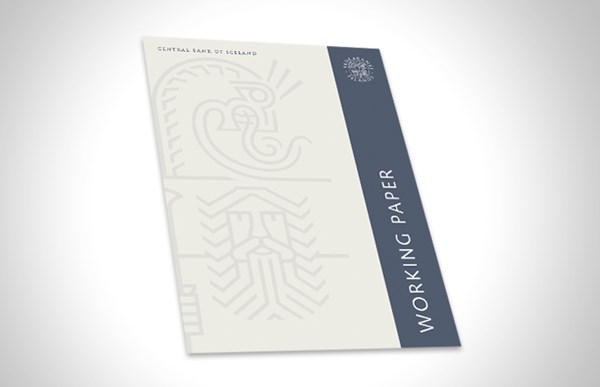Working Paper no. 91: Participation in supplementary pension savings in Iceland

The Central Bank of Iceland has published the working paper “Participation in supplementary pension savings in Iceland” by Ásgeir Daníelsson, Rannveig Sigurdardóttir, and Svava J. Haraldsdóttir. Ásgeir Daníelsson is former Head of Research and Forecasting in the Bank’s Economics and Monetary Policy department, Rannveig Sigurdardóttir is Deputy Governor for Monetary Policy, and Svava J. Haraldsdóttir is an economist in the Economics and Monetary Policy department.
Supplementary pension savings in Iceland started in 1999. From the start, special incentives were in place to increase participation; for instance, capital income on supplementary pension savings is tax-free, as it is on other pension savings. The matching contribution from the employer and the subsidies from 2014 that allowed the allocation of supplementary pension savings tax-free towards mortgage principal make the return on this type of savings quite favourable. The paper examines how participation has developed over the years, using microdata from tax returns of all Icelandic taxpayers in 1999-2017. Particular attention is paid to developments following the 2008 financial crisis and the additional subsidies introduced in 2014. The paper also examines which factors determine the likelihood of participation in supplementary pension savings, including age, education, income, and gender. We find that even if the rate of return increases with age, participation does not increase with age. More education and higher income increase the likelihood of participation, and women participate more than men.
Despite the generous incentives in place, it was surprising how many of those entitled to participate decide not to. It was also interesting that at age 60, when supplementary pension savings can be withdrawn, participation dropped even among those still in the labour market. We observed a significant correlation between the decision to start withdrawing funds and the decision to stop participating. The subsidies that were introduced in 2014 primarily benefited those carrying a mortgage; however, we observed that roughly half of supplementary pension savings participants with some mortgage debt chose to make tax-free allocations towards their mortgage principal, while the other half chose not to.
The working paper by Ásgeir Daníelsson, Rannveig Sigurdardóttir, and Svava J. Haraldsdóttir can be found here: Participation in supplementary pension savings in Iceland.
